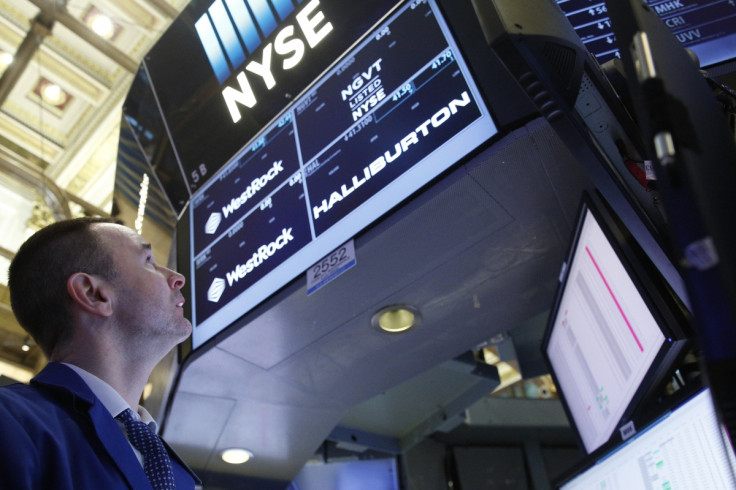US market close: Stocks end lower, as early jobs data and energy weigh heavy

US stocks closed down on Wednesday 4 May for the second session in a row, as mixed economic data and energy had a big impact. Weaker-than-expected private-sector jobs data and a decline in worker productivity also overshadowed reports of gains in the services industry.
The Dow Jones Industrial Average fell by 99.65 points, or 0.6%, to settle at 17,651.26. A 2.8% decline in Caterpillar Inc stocks and a 1.9% drop in Goldman Sachs Group Inc weighed. The blue-chips gauge, however, closed off session lows of about 142 points.
The S&P 500 dropped 12.25 points, or 0.6%, to end at 2,051.12, with drops in the energy and industrials sectors contributing to losses. According to CNBC, energy stocks settle off worst levels but remained 1.3% lower and was the worst of the S&P 500's 10 sectors.
US crude oil futures managed to close in positive territory after settling up $0.13 (£0.09;€0.11), or 0.3%, at $43.78 (£30.19;€38.11) a barrel. CNBC reported that weekly EIA crude inventories revealed a surge of 2.8m barrels.
Meanwhile, the Nasdaq Composite fell 37.58 points, or 0.8%, to settle at 4,725.64. The tech-heavy index briefly fell 1% and ended close to 9.7% below its 52-week intraday high. Apple, which has suffered over a week of declines, dropped 1% and the iShares Nasdaq Biotechnology ETF (IBB) declined 2.9%, settling below its 50-day moving average and posting its seventh negative day in eight, CNBC noted.
According to MarketWatch, the ADP employment number for April was released on 4 May, coming in at 156,000—much lower of the 200,000 jobs expected. The report, which hinted at slowing of private payroll gains, is considered a precursor to the nonfarm-payrolls data to be released on 6 May.
Productivity of US businesses and works also dropped by 1% annual rate in the first quarter. The latest declines was the fourth to occur in the last six quarters. MarketWatch however noted that the US trade deficit dwindled to its lowest level in over a year. The drop nevertheless revealed a touchy climate for American exporters and caution by consumers.
Michael Arone, chief investment strategist at State Street Global Advisors, said the data continued to "paint a picture that can be described as "growth purgatory'". Aaron told MarketWatch that the US economy is "stuck in low and slow gear," noting that data continues to miss expectations but have not sunk so low as to indicate a looming recession.
The US dollar index rose about 0.3%, with the euro landing below $1.15 and the yen at 106.9 yen against the greenback. "The dollar's been strong for two days now. Some of it could be linked to the premise the Fed could hike this summer. Two Fed speakers hinted at this," Thierry Albert Wizman, global interest rates and currencies strategist at Macquarie, told CNBC.
"There's also a sense in the market the weakness we saw in the dollar in March was overdone a bit," Wizman added.
On 3 March, Atalanta Fed President Dennis Lockhart told Reuters that it was "certainly possible" the Fed could raise two more times this year. However, uncertainties such as the Brexit vote in June, could influence that decision. San Francisco Federal Reserve President John Williams added separately that he would support a June hike if he continues to see progress in the economy, inflation and jobs.
Treasury yields traded mixed, with the 2-year yield by 0.73%—its lowest in over a fortnight—and the 10-year yield near 1.78%. Gold futures for June delivery dropped $17.40 (£12.00;€15.15) to $1,274.40 (£878.88;€1,109.35) an ounce.
Overseas, European stocks and Asian markets closing lower, while Japanese markets remained closed on holiday.
© Copyright IBTimes 2025. All rights reserved.


















